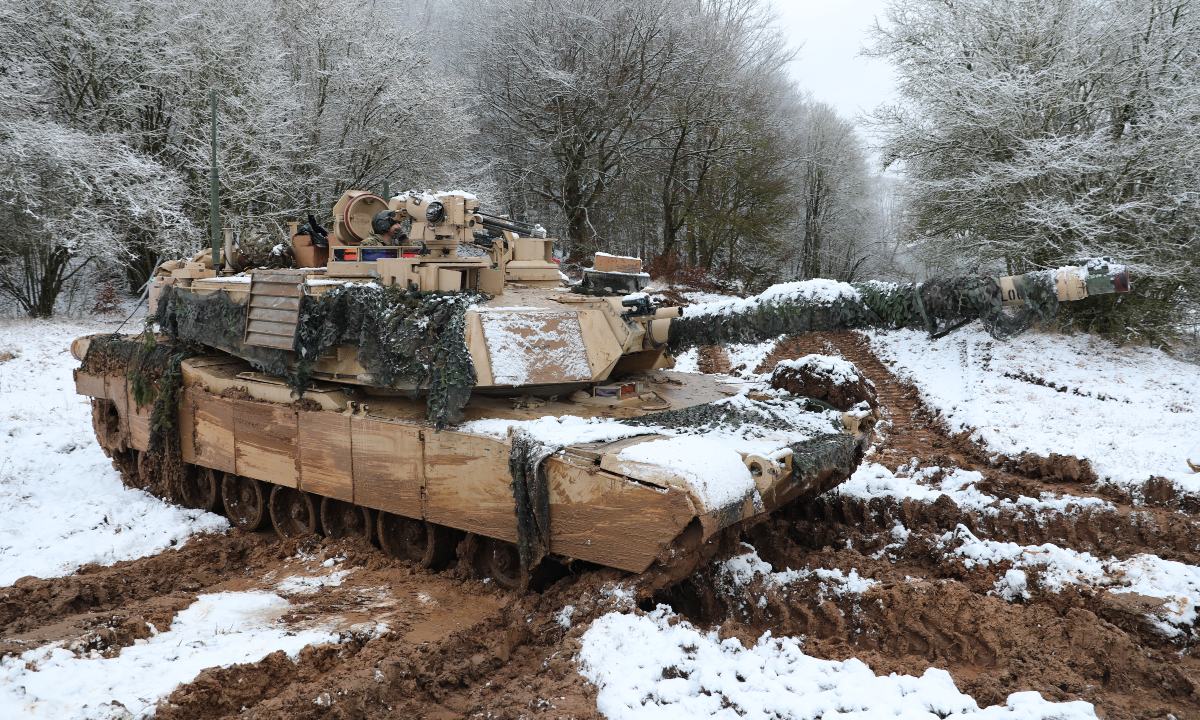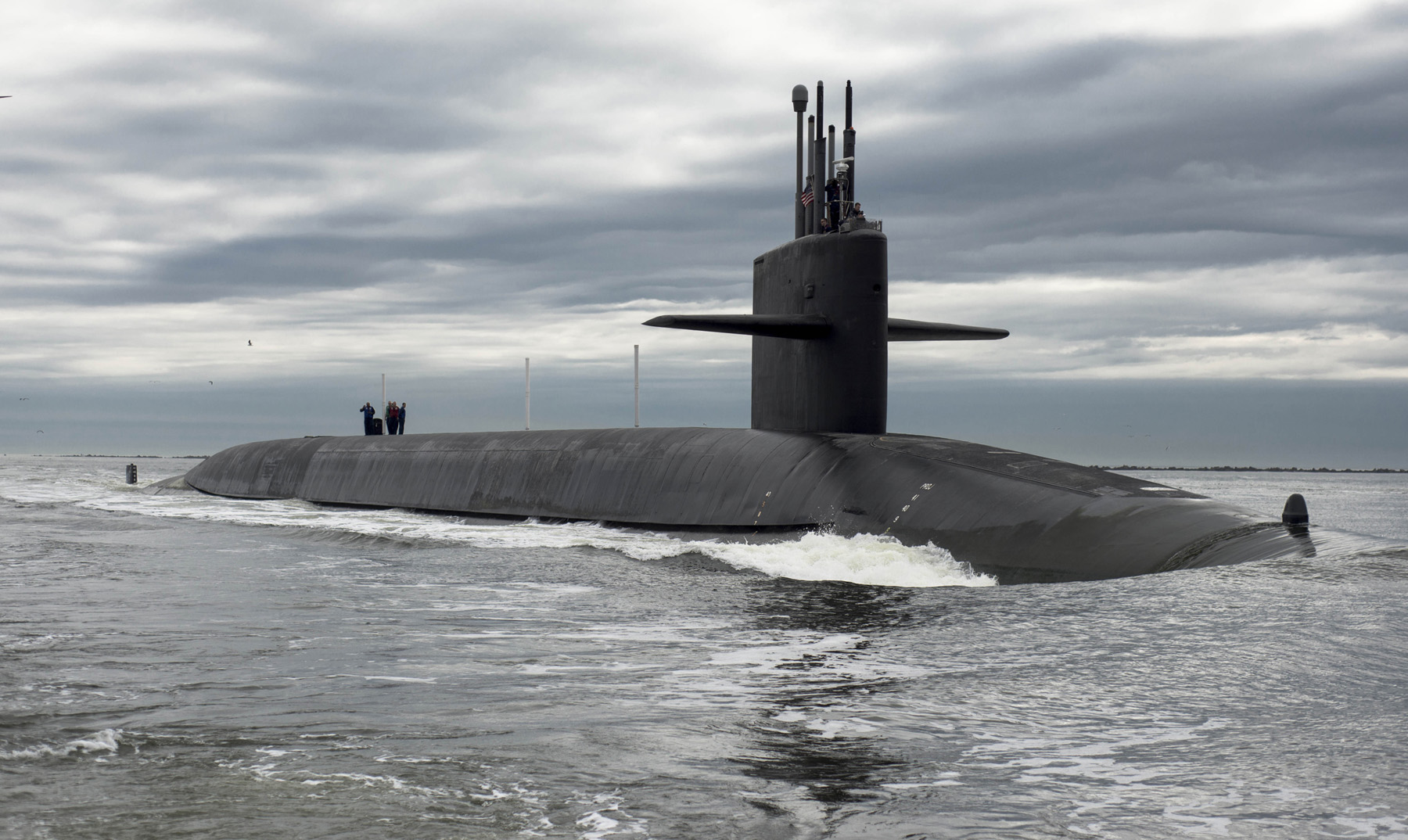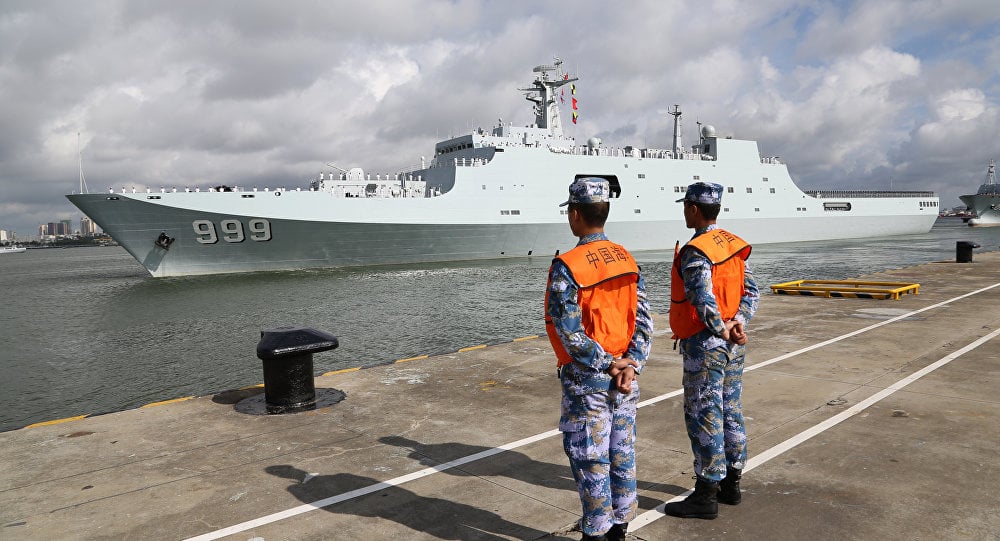Hummm......

 mwi.usma.edu
mwi.usma.edu
What If It Doesn’t End Quickly? Reconsidering US Preparedness for Protracted Conventional War
Patrick Savage | July 23, 2020
After two decades of focusing on counterinsurgency and counterterrorism, the US Department of Defense has worked to reorient toward the possibility of conflict with a near-peer competitor. While the department has progressed in this area, one sub-set of preparation has been largely ignored: the defense enterprise needs to confront the non-zero possibility that it may have to fight not only a conventional war, but a protracted conventional war against another great power in the coming decades. To that end, the Department of Defense needs to revisit and question assumptions that it may still maintain about protracted warfare in order to prepare the United States for the potential of extended conflict with a near-peer adversary.
While the definition of conventional war is widely understood, that of protracted conventional war has been harder to come by. Conceptualizing it is even more difficult now, as the US understanding of war appears to have baked-in assumptions that it will be—because it is objectively desirable—a short war. In the late 1980s, RAND researchers considered any war with the Soviet Union that lasted more than thirty days to be protracted. More recently, Office of Net Assessment alum Dr. Andrew Krepinevich set a standard of any war lasting more than eighteen months as being protracted. This article considers any war between sovereign states that is measured in months or years as opposed to weeks or days as a protracted conventional war.
The United States’ last experience with fighting a war against a peer that could be called protracted and conventional—World War II—was almost seventy-five years ago. Many of the assumptions the United States still holds about protracted war are just as old. In cases where lessons from decades past may still be valid or have regained utility, they will need to be reconsidered in the current context. Failure to do so results in a paradoxical situation where the defense community embraces outdated assumptions, but fails to identify lessons that are still relevant to the current age. Several of the most notable—and potentially dangerous—faulty assumptions, the institutional manifestations of which seem baked in to the way that DoD approaches the problem of conventional warfare in general, warrant particular examination: that the United States will be the master of the new domains of warfare; that the potential for “decisive battle” still exists; that ample supplies of critical war material will always be available; and that the US homeland is untouchable.
Master of Its Domain
One of the most dangerous assumptions is that by the time the next major conflict breaks out, the United States will be able to achieve and maintain dominance over emerging domains of warfare like space and cyberspace, as well as in the more amorphous battle for information. This assumption is not exclusive to a protracted war, but becomes all the more critical in a conflict with a peer adversary.
Looking back to World War II, traditional measures of domain superiority did not help the Allies, even as they held advantages. In 1940, on paper, the French Army was widely considered the strongest military in the world. France had more tanks than Germany, with several models superior to anything the German Army possessed. Ultimately, however, Germany had the superior concept of operations of how to use the tanks and other new weapons in its Blitzkrieg. The United States cannot assume it will be the master of new tools from the onset of war, even if the individual tools themselves are technologically or even numerically superior to those of the adversary. Moreover, lacking any significant examples the relevant measures of superiority for domains like cyber and space are essentially unknown. A lack of experimentation, clinging to outdated concepts, and ignoring new or different lessons all factor in to an inability to imagine new concepts for old capabilities or disruptive capabilities in the face of “proven” concepts.
Going back further, World War I offers the same lessons for all sides. Before 1914, all major participants possessed most of the new weapons that would shape that war—machine guns, aircraft, long-range artillery, and others. All had been used before in grisly, but institutionally ignored, conflicts that previewed the slaughter to come. Despite this, these armies failed to understand or anticipate how these weapons would be used at scale, in the service of a large operational concept, or in the specific environment they would encounter in Europe from 1914 until 1918. Aircraft, for example, were at first used mainly for reconnaissance rather than bombing or air superiority. The warring parties would not fully understand some weapons that emerged during the war until the next one—as the tank in 1940 exemplifies. Training and experimentation can help to mitigate these risks, but the United States may not know how or which new domains or domain-specific capabilities will factor into the next major war until it is in the thick of it. Balancing preparedness with flexibility will be crucial.
An increasing number of voices are questioning the United States’ general military superiority vis-à-vis a near-peer competitor. If the United States is to prepare as much as possible for a potential near-peer protracted conflict, considering such questions can only be the beginning of a shift in how DoD approaches near-peer conflict, not the end. There must be an open, rigorous, intellectually honest, and continuous professional debate about the character of future war and a healthy fear that the most important changes may come from new or nontraditional domains.
The Lure of “Decisive Battle”
Another assumption held from even further back in the modern age is the idea that militaries should seek decisive battle as the key not only to a successful campaign but to a short war. Historian Cathal Nolan holds this as a central theme in his book, The Allure of Battle. The desire for a decisive battle is understandable—while under some circumstances, a drawn-out conflict could be advantageous, it is generally something states wish to avoid. Where problems arise is when a state hopes for the best—a quick and decisive war—and fails to account for the full range of alternatives, one of the worst of which is a protracted war.
In the case of the United States, the proposition that a military victory can be both rapid and decisive (militarily at least) was ingrained in Operation Desert Storm in 1991, and subsequently was reflected in the “Two Major Regional Conflicts” (Two MRC) force-sizing construct. This construct was geared toward what was thought to be the new post–Cold War norm: regional threats like North Korea, Iran, and Ba’athist Iraq. As characterized in the Secretary of Defense’s Annual Report in 1996, the Two MRC construct called upon the United States “to fight and decisively win two MRCs that occur nearly simultaneously.” With various modifications, this served as the US force-sizing construct until the 2018 National Defense Strategy shifted focus to defeating one great-power adversary and deterring another.
Continued.....

What If It Doesn’t End Quickly? Reconsidering US Preparedness for Protracted Conventional War - Modern War Institute
After two decades of focusing on counterinsurgency and counterterrorism, the US Department of Defense has worked to reorient toward the possibility of conflict with a near-peer competitor. While the department […]
 mwi.usma.edu
mwi.usma.edu
What If It Doesn’t End Quickly? Reconsidering US Preparedness for Protracted Conventional War
Patrick Savage | July 23, 2020
After two decades of focusing on counterinsurgency and counterterrorism, the US Department of Defense has worked to reorient toward the possibility of conflict with a near-peer competitor. While the department has progressed in this area, one sub-set of preparation has been largely ignored: the defense enterprise needs to confront the non-zero possibility that it may have to fight not only a conventional war, but a protracted conventional war against another great power in the coming decades. To that end, the Department of Defense needs to revisit and question assumptions that it may still maintain about protracted warfare in order to prepare the United States for the potential of extended conflict with a near-peer adversary.
While the definition of conventional war is widely understood, that of protracted conventional war has been harder to come by. Conceptualizing it is even more difficult now, as the US understanding of war appears to have baked-in assumptions that it will be—because it is objectively desirable—a short war. In the late 1980s, RAND researchers considered any war with the Soviet Union that lasted more than thirty days to be protracted. More recently, Office of Net Assessment alum Dr. Andrew Krepinevich set a standard of any war lasting more than eighteen months as being protracted. This article considers any war between sovereign states that is measured in months or years as opposed to weeks or days as a protracted conventional war.
The United States’ last experience with fighting a war against a peer that could be called protracted and conventional—World War II—was almost seventy-five years ago. Many of the assumptions the United States still holds about protracted war are just as old. In cases where lessons from decades past may still be valid or have regained utility, they will need to be reconsidered in the current context. Failure to do so results in a paradoxical situation where the defense community embraces outdated assumptions, but fails to identify lessons that are still relevant to the current age. Several of the most notable—and potentially dangerous—faulty assumptions, the institutional manifestations of which seem baked in to the way that DoD approaches the problem of conventional warfare in general, warrant particular examination: that the United States will be the master of the new domains of warfare; that the potential for “decisive battle” still exists; that ample supplies of critical war material will always be available; and that the US homeland is untouchable.
Master of Its Domain
One of the most dangerous assumptions is that by the time the next major conflict breaks out, the United States will be able to achieve and maintain dominance over emerging domains of warfare like space and cyberspace, as well as in the more amorphous battle for information. This assumption is not exclusive to a protracted war, but becomes all the more critical in a conflict with a peer adversary.
Looking back to World War II, traditional measures of domain superiority did not help the Allies, even as they held advantages. In 1940, on paper, the French Army was widely considered the strongest military in the world. France had more tanks than Germany, with several models superior to anything the German Army possessed. Ultimately, however, Germany had the superior concept of operations of how to use the tanks and other new weapons in its Blitzkrieg. The United States cannot assume it will be the master of new tools from the onset of war, even if the individual tools themselves are technologically or even numerically superior to those of the adversary. Moreover, lacking any significant examples the relevant measures of superiority for domains like cyber and space are essentially unknown. A lack of experimentation, clinging to outdated concepts, and ignoring new or different lessons all factor in to an inability to imagine new concepts for old capabilities or disruptive capabilities in the face of “proven” concepts.
Going back further, World War I offers the same lessons for all sides. Before 1914, all major participants possessed most of the new weapons that would shape that war—machine guns, aircraft, long-range artillery, and others. All had been used before in grisly, but institutionally ignored, conflicts that previewed the slaughter to come. Despite this, these armies failed to understand or anticipate how these weapons would be used at scale, in the service of a large operational concept, or in the specific environment they would encounter in Europe from 1914 until 1918. Aircraft, for example, were at first used mainly for reconnaissance rather than bombing or air superiority. The warring parties would not fully understand some weapons that emerged during the war until the next one—as the tank in 1940 exemplifies. Training and experimentation can help to mitigate these risks, but the United States may not know how or which new domains or domain-specific capabilities will factor into the next major war until it is in the thick of it. Balancing preparedness with flexibility will be crucial.
An increasing number of voices are questioning the United States’ general military superiority vis-à-vis a near-peer competitor. If the United States is to prepare as much as possible for a potential near-peer protracted conflict, considering such questions can only be the beginning of a shift in how DoD approaches near-peer conflict, not the end. There must be an open, rigorous, intellectually honest, and continuous professional debate about the character of future war and a healthy fear that the most important changes may come from new or nontraditional domains.
The Lure of “Decisive Battle”
Another assumption held from even further back in the modern age is the idea that militaries should seek decisive battle as the key not only to a successful campaign but to a short war. Historian Cathal Nolan holds this as a central theme in his book, The Allure of Battle. The desire for a decisive battle is understandable—while under some circumstances, a drawn-out conflict could be advantageous, it is generally something states wish to avoid. Where problems arise is when a state hopes for the best—a quick and decisive war—and fails to account for the full range of alternatives, one of the worst of which is a protracted war.
In the case of the United States, the proposition that a military victory can be both rapid and decisive (militarily at least) was ingrained in Operation Desert Storm in 1991, and subsequently was reflected in the “Two Major Regional Conflicts” (Two MRC) force-sizing construct. This construct was geared toward what was thought to be the new post–Cold War norm: regional threats like North Korea, Iran, and Ba’athist Iraq. As characterized in the Secretary of Defense’s Annual Report in 1996, the Two MRC construct called upon the United States “to fight and decisively win two MRCs that occur nearly simultaneously.” With various modifications, this served as the US force-sizing construct until the 2018 National Defense Strategy shifted focus to defeating one great-power adversary and deterring another.
Continued.....








